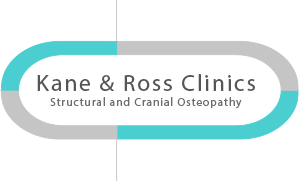Osteopathic advice for mountain-goers: Injury prevention and damage limitation

At this time of year as Osteopaths we see many people that have returned from their mountain adventures with ski or snow sport related injuries.
Regardless of whether you are skiing, snowboarding, snowshoeing or simply enjoying the après-ski, a week in the mountains is physical both on and off-piste and your endurance is likely to be tested. Make the most out of your trip, ensure you have the right equipment and be physically prepared!
Most snow sports require strength, flexibility, balance, and muscle control. As most of us do not ski regularly, we are likely to experience muscle soreness after a couple of days on the slopes. Muscle soreness may cause some loss of muscle control, increasing the likelihood of injury. To support adaptability and enhance your technique, we advise that you start to strengthen your muscles prior to your trip.
If you are experiencing musculoskeletal pain before you go away, don’t ignore it! An existing problem is likely to predispose an injury. Osteopathic management offers a full assessment of your biomechanics to help prevent further pain, and advice will be given on how to best support the area of dysfunction.
Patients often come into the clinic with the following injuries after a skiing holiday:
- Muscle strain due to overuse
- Damage to the ligaments or cartilage of the knee due to twisting and changing direction
- Rotator cuff muscle and shoulder injuries
- Thumb, hand and wrist injuries
-
Whiplash
- If you have returned from the mountains a little worse for wear, or if you have any concerns, please contact the clinic on 020 7436 9007 or email info@kaneandross.co.uk to discuss how we can help you.
Strengthening Exercises
Squats and Lunges
When skiing, the quadriceps (the group of muscles at the front of your thighs) are constantly engaging as we bend our knees and lean our body weight forwards in our ski boots.
Squats
Stand against a wall, keep your back straight and bend your knees to a 90degree angle so that you are in a sitting position. Hold this position for 10 seconds and repeat 10 times.
If you would rather perform standard squats to strengthen, ensure that your knees, hips and toes are in alignment, make sure that your back is not arched and keep your buttocks above knee level.
Lunges
Lunges are also good to strengthen. Stand with your feet about hip-width apart and engage your abdominal muscles. To initiate your lunge, take a big step forwards. Both knees should be at a 90degree angle as you lunge down and keep your back knee off the ground.
Glut Bridges
When skiing downhill your upper body is normally held in flexion. In this position your glutei (buttock muscles) and hamstrings (at the back of your thigh) have to work hard to counterbalance.
Lie on your back with your knees bent and you feet flat on the floor. Lift your hips off the ground until your knees, hips and shoulders form a straight line. Engage your glutei and abdominal muscles and hold the position for 10 seconds.
Heel Raises and Calf Stretching
Strengthening and increasing the flexibility of your gastrocnemius and soleus (the muscles in your calf) will be of benefit as these help to stabalize and keep you upright!
Heel Raises
Standing near a wall for balance, place your feet hip-width apart and make sure your ankles, knees and hips are in alignment. Press down into the balls of your feet to raise your body upwards.
Stretching
Stand facing a wall with your hands flat against it. Place the leg to be stretched back behind you, keeping your back knee straight, lunge forwards on your front leg until you feel a stretch in the back leg.
Alternatively, sit on the floor with the leg to be stretched extended forwards, bend the other leg and place your foot on the floor. Using a band, towel, or your hand if you can reach, pull the toes toward you. Hold for 10 to 20 seconds then repeat on the other side.
